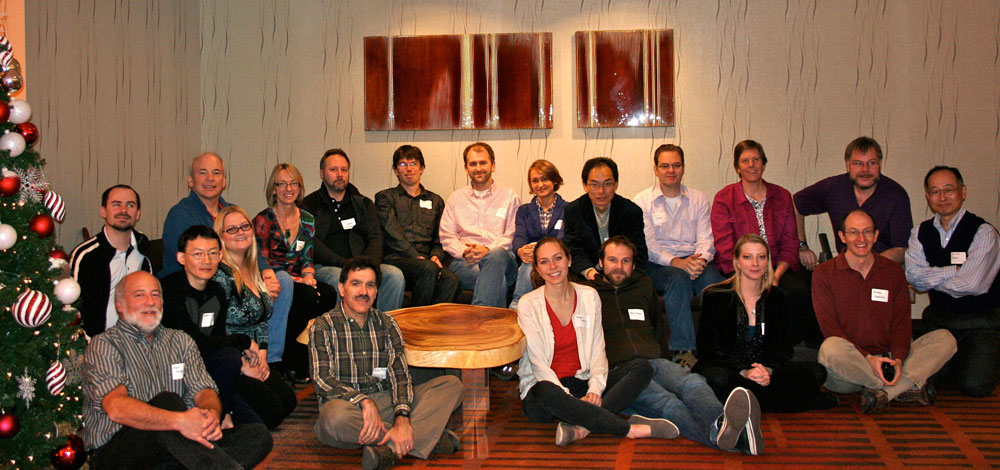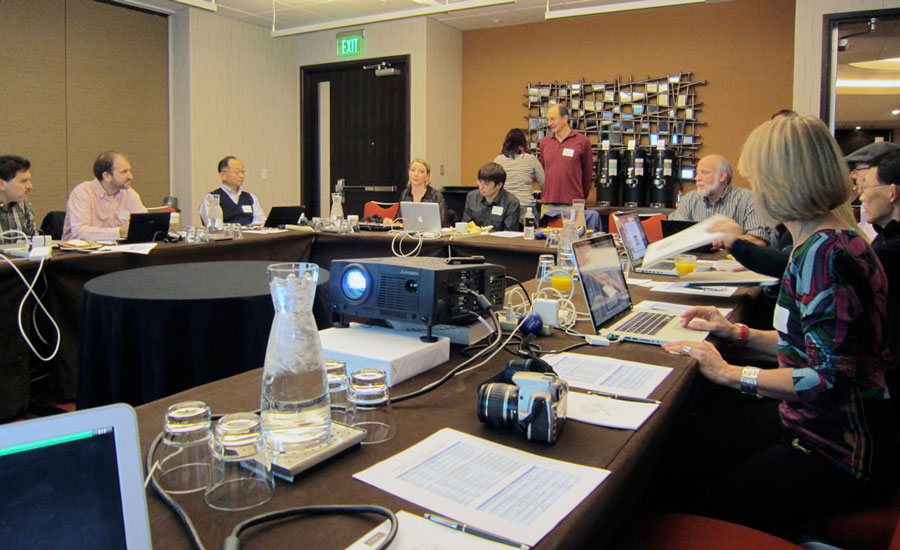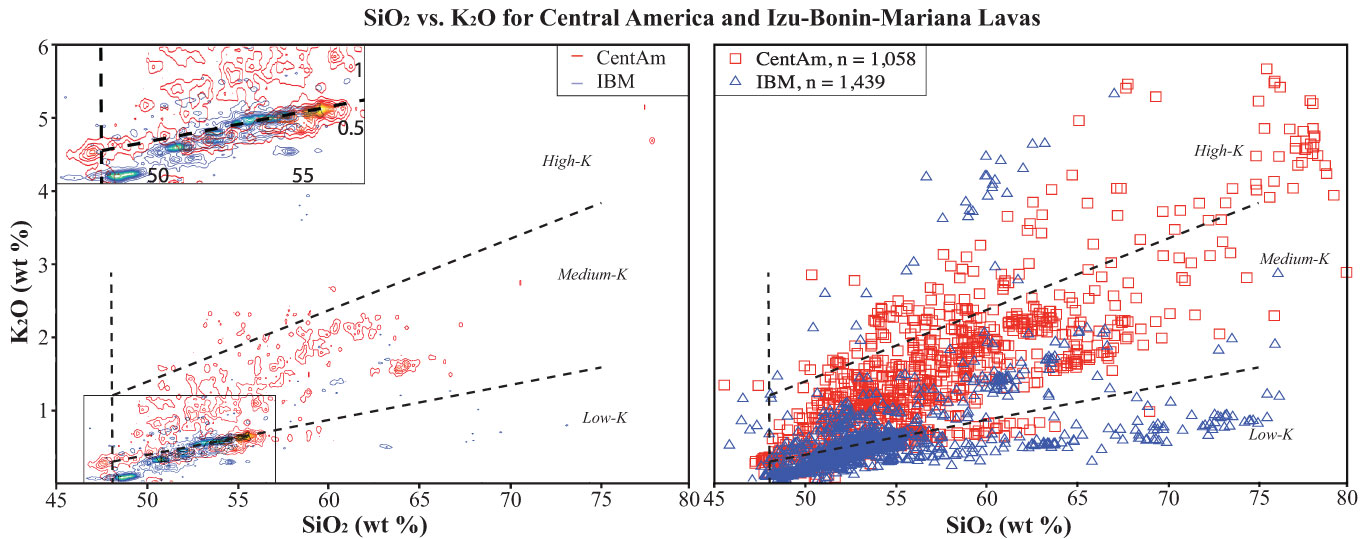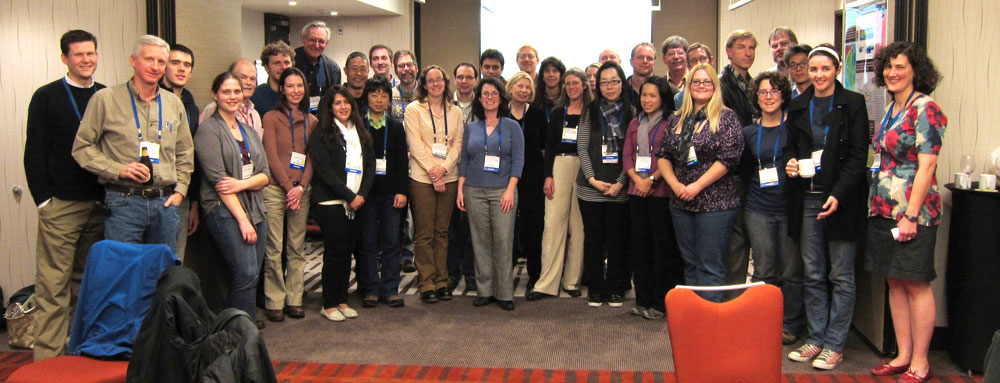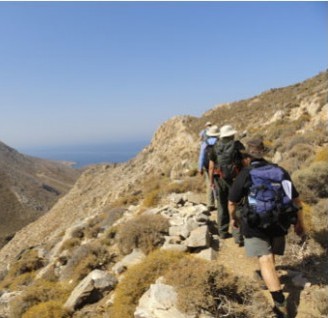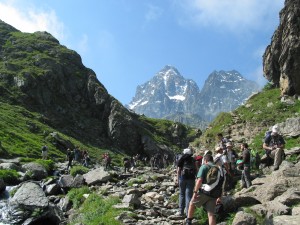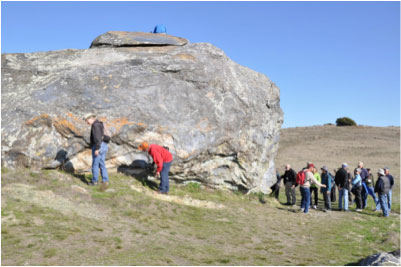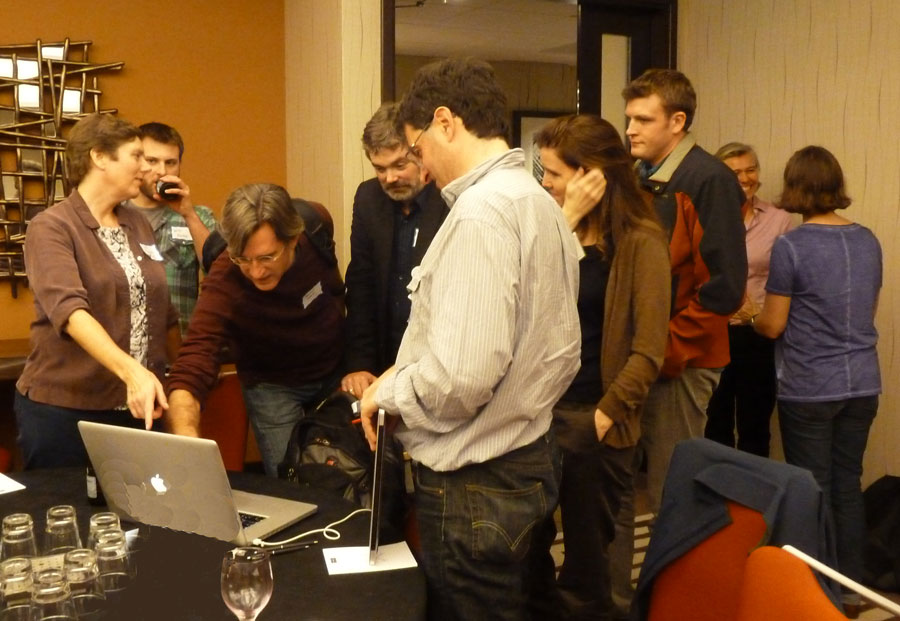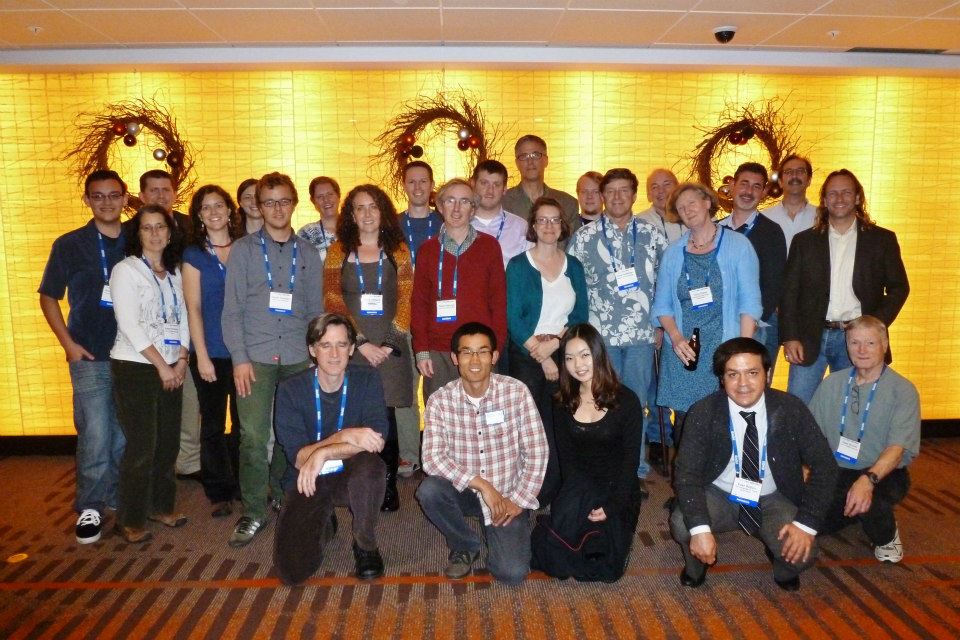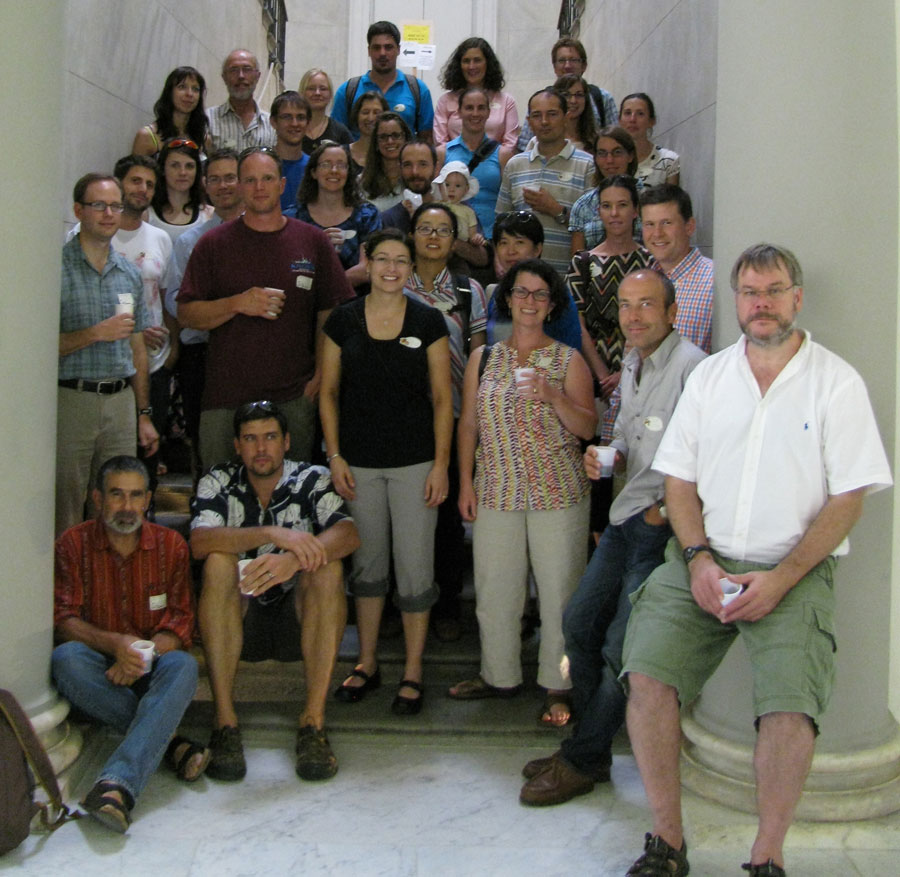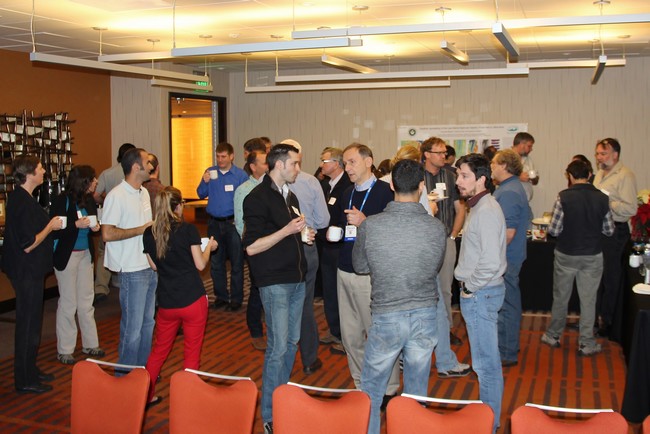The GeoPRISMS Steering and Oversight Committee is pleased to announce a workshop to develop a detailed science plan for the GeoPRISMS East African Rift System (EARS) Primary Site. The East African Rift System was chosen as a primary site for GeoPRISMS because it offers significant opportunities to study a wide range of questions outlined in the GeoPRISMS Science Plan for the Rift Initiation and Evolution (RIE) Initiative. More details about GeoPRISMS science objectives in the East African Rift can be found in the GeoPRISMS Science Plan and the Draft Implementation Plan; these documents will serve as the starting point for this workshop.
The main goals of the workshop are to clarify the community research objectives in the EARS, to discuss candidate “Discovery Corridors,” to identify opportunities for international partnerships, and to develop a detailed Implementation Plan for GeoPRISMS research, considering the available resources and infrastructure, to guide GeoPRISMS proposers and reviewers. The success of GeoPRISMS studies in the East African Rift also will depend on developing strong partnerships with international communities with similar research interests.
The program will include a number of overview presentations on the EARS, along with plenary and break-out discussions, culminating in decisions regarding science implementation in the East African Rift. White papers will be solicited in advance of the workshop to ensure community input.
The meeting will take place in Morristown, NJ from October 25-27, with a graduate student symposium on Wednesday, October 24.
Researchers from all countries are encouraged to apply, independent of past involvement in GeoPRISMS. Post-docs, senior graduate students, and members of under-represented groups are especially encouraged to participate. Funding from NSF and other sources is expected to cover a significant fraction of travel and accommodation costs for ~80 participants with a diversity of interests, including limited funds for international attendees. Applications should include a brief statement of interest and anticipated contribution to the workshop and a short curriculum vitae.
Ramon Arrowsmith
Estella Atekwana
Maggie Benoit
Andrew Cohen
Rob Evans
Matthew Pritchard
Donna Shillington
Tyrone Rooney
Student Symposium | Wednesday, October 24
8:00 – 5:00 Graduate Student Symposium & Field Trip
5:30 Workshop Registration & Ice Breaker (with Cash Bar)
7:00 Graduate Student Dinner
Day 1 | Thursday, October 25
Moderators: Maggie Benoit, Tyrone Rooney
8:00 Opening remarks
· Welcome from NSF – B. Haq, J. Wade
· Introduction to GeoPRISMS – Julie Morgan
· Goals of meeting – Conveners
8:30 Introductory Talk: Overview of the EAR | Cindy Ebinger (U. Rochester)
9:00 Plenary Topic 1: How does the presence or absence of an upper-mantle plume influence extension?
a. Seismological imaging of plumes and associated magmatism in rifts | 12Mb – Gabriel Mulibo and JP O’Donnell (Penn State U.)
b. Origin of magmas from geochemical perspective | 1Mb – Tyrone Rooney (Michigan State)
c. Plume dynamics and surface uplift | 8Mb – Sarah Stamps (Purdue U.)
9:45 Plenary Topic 2: How does the mechanical heterogeneity of continental lithosphere influence rift initiation, morphology, and evolution?
a. Mechanisms for thinning the lithosphere, including thermal/chemical erosion, and interaction with large scale lithospheric structures | 11Mb – Ben Holtzman (LDEO)
b. Control of pre-existing structures on early rifting | 3Mb – Aubreya Adams (Wash. U)
c. Geochemical heterogeneity of the lithosphere | 2Mb – Wendy Nelson (U. Houston)
10:30 Coffee Break & Poster Session
Moderators: Matt Pritchard, Rob Evans
11:00 Plenary Topic 3: How is strain accommodated and partitioned throughout the lithosphere, and what are the controls on strain localization and migration?
a. Magmatism during rifting events | 1Mb – David Ferguson (LDEO)
b. Modeling and observations of faulting and magmatism during rifting | 2Mb – Juliet Biggs (U. Bristol)
c. Active deformation processes | 1Mb – Becky Bendick (U. Montana)
11:45 Plenary Topic 4: What factors control the distribution and ponding of magmas and volatiles, and how are they related to extensional fault systems bounding the rift?
a. Geochemical studies of magmas and volatiles | 35Mb – Tobias Fischer (U. New Mexico)
b. Geophysical imaging of magmas and fluids (MT, seismic) | 1Mb – Derek Keir (Natl. Ocean. Centre, Southampton)
c. Shallow dynamics of magma chambers/dikes and eruptions | 1Mb – Manahloh Bechalew (U. Rochester)
12:30 LUNCH
Moderators: Andrew Cohen, Estella Atekwana
1:45 Plenary Topic 5: How does rift topography, on either the continental- or basin-scale, influence regional climate, and what are the associated feedback processes?
a. Climate and tectonics and feedbacks | 3Mb – Manfred Strecker (U. Potsdam)
b. Modeling perspective | Joellen Russell (U. Arizona)
c. Tectonics and sedimentation at basin scale | 24Mb – Chris Scholz (Syracuse U.)
2:30 Pop-ups by Graduate Students
3:00 Introduction to BREAKOUT 1 – Prioritizing science objectives. Divide into groups based on science questions in the draft implementation plan. What are the highest-priority questions? What kinds of observations do we need to address them and what are the characteristics of places where they should be made? What kind of modeling/experimental work is needed?
3:15 Break & Poster Session
3:45 BREAKOUT 1 – Round 1
4:30 BREAKOUT 1 – Round 2
How does the presence or absence of an upper-mantle plume influence extension?
Leader: Rob Moucha
Scribe: Sara Mana
How does the mechanical heterogeneity of continental lithosphere influence rift initiation, morphology, and evolution?
Leader: Anne Egger
Scribe: Kate Selway
How is strain accommodated and partitioned throughout the lithosphere, and what are the controls on strain localization and migration?
Leader: Roger Buck
Scribe: Andrew Katunwehe
What factors control the distribution and ponding of magmas and volatiles, and how are they related to extensional fault systems bounding the rift?
Leader: Laurent Montesi
Scribe: Dorsey Wanless
How does rift topography, on either the continental- or basin-scale, influence regional climate, and what are the associated feedback processes?
Leader: Naomi Levin
Scribe: Gail Ashley
Moderators: Donna Shillington, Ramon Arrowsmith
5:30 Plenary Topic 6: Hazards and Resources in the EAR and Links to Rifting
a. Seismic hazard | 1Mb – Ataley Ayele (Addis Ababa U.)
b. Volcanic hazard | 3Mb – Nicolas d’Oreye (Natl. Museum of Nat. Hist. Lux.) & Lukawa N’yombo (Goma Volcanic Observatory)
c. Oil/gas exploration | 14Mb – Dozith Abeinomugisha (PEPD Uganda)
6:30 Adjourn for Day
7:00 Conference Dinner
Volcano Monitoring in the Virunga Volcanic Province, DR Congo | 2.8 Mb – Nicolas D’Oreye
8:00 GeoPRISMS Data Resources Mini-workshop | 1Mb – Andrew Goodwillie
Day 2 | Friday, October 26
Moderators: Rob Evans, Donna Shillington
8:00 Report from breakouts & plenary discussion
9:00 Plenary Topic 7: Synergies with other agencies / international projects
NSF/USAID PEER Program Annica Wayman (USAID) and DeAndra Beck (NSF)
Overview of recent and funded NSF programs | 1Mb – Rob Evans (WHOI) and Donna Shillington (LDEO)
New NSF-IES (Integrated Earth Systems) and other programs | 1Mb – Leonard Johnson and Jennifer Wade (NSF)
AfricaArray | 1Mb – Andy Nyblade (Penn State U.)
Hominin Sites and Paleolakes | 1Mb – Andy Cohen (U. Arizona)
Lake Drilling Project | 2Mb – Chris Scholz (Syracuse U.)
Afar consortium | 1Mb – Kathy Whaler (Edinburgh)/Derek Keir (NOCS)
Summary of French programs | 1Mb – Cecile Doubre (U. Strasbourg)
NASA | 1Mb – Simon Carn (Mich. Tech. U)
GEOBSNET | 1Mb – François Kervyn (Royal Museum for Central Africa, Belgium)
10:30 Coffee Break & Poster Session
Moderators: Andrew Cohen, Rob Evans
11:00 Plenary Topic 8: African partnerships panel. (5 min presentations how to build successful, mutually beneficial collaborations in Africa, followed by plenary discussion
12:30 LUNCH
1:30 Quick Pop-Ups and Plenary Discussion
2:30 Introduction to BREAKOUT 2 – Implementation strategies. Divide into groups based on science questions in the draft implementation plan. In the context of high-priority science and critical observations/modeling from BREAKOUT 1, discuss implementation strategies for each question, including the best places in the EAR to implement science questions, opportunities to leverage other activities, and high-priority thematic studies.
2:45 BREAKOUT 2, Round 1
3:30 BREAKOUT 2, Round 2
How does the presence or absence of an upper-mantle plume influence extension?
Leader: Jim Gaherty
Scribe: Maryjo Brounce
How does the mechanical heterogeneity of continental lithosphere influence rift initiation, morphology, and evolution?
Leader: TBA
Scribe: Julie Elliot
How is strain accommodated and partitioned throughout the lithosphere, and what are the controls on strain localization and migration?
Leader: John Nabelek
Scribe: Erin DiMaggio
What factors control the distribution and ponding of magmas and volatiles, and how are they related to extensional fault systems bounding the rift?
Leader: Adam Soule
Scribe: Brandon Chiasera
How does rift topography, on either the continental- or basin-scale, influence regional climate, and what are the associated feedback processes?
Leader: Ramon Arrowsmith
Scribe: Amy Morrissey
4:15 Coffee Break
4:45 Reports from Breakout 2
5:30 Plenary Discussion
6:00 Adjourn for the Day
7:00 Dinner on your own
8:00 Poster Session
Day 3 | Saturday, October 27
8:00 Reports from Breakout 2
8:30 Plenary Discussion
9:00 Introduction to BREAKOUT 3 – Finalizing implementation plan. Divide into groups that represent the spectrum of science for the EAR. Discuss integrated strategies to accomplish the highest impact in the EAR, including the best locations for focused, multidisciplinary study, key observations, thematic studies and leveraging opportunities.
9:15 BREAKOUT 3
10:15 Graduate Student Perspective & Implementation Plan
10:45 Coffee Break and Poster Session
11:15 Reports from BREAKOUT 3 and final plenary discussion with decision making on areas for focused research and highest priority thematic studies.
11:45 Wrap-up discussion
12:00 Meeting Adjourns
12:00-6:00 Post-Meeting Field Trip, (Lunch Provided – Register with GeoPRISMS office)
Cotton Building Room 217, Victoria University, Wellington, NZ
Sunday, April 14, 2013
8:00 -9:00 AM Breakfast and Registration
9:00 – 10:30 AM Plenary Session:
Introductions
Overview of GeoPRISMS and EARS Planning Meeting – Maggie Benoit and Juli Morgan
Overview of EARS Geophysics – Donna Shillington
Overview of EARS Geochemistry – Tyrone Rooney
Overview of EARS Surface Processes – Ramon Arrowsmith
10:30 – 12:00 PM Student Posters and Presentations
12:00 – 5:30 PM Field Trip to Newark Basin led by Martha Withjack and Roy Schlische
7:00 PM Student Dinner
Download the compiled white papers
Landscape and lakescape evolution: source-to-sink study of geomorphic, tectonic, climatic, andvegetation interactions in a tropical rift basin (Lake Malawi) | 300Kb – Arrowsmith et al.
The Lake Tanganyika Drilling Project: A potential ~10 Ma continuous record of integrated tectonicand climatic history for the western African rift | 200Kb – Cohen et al.
Studying early stage of rifting in Northern Tanzania | 700Kb – Doubré et al.
The GeoPRISMS Dataportal | 200Kb – Goodwillie
Active Kinematics of Lithospheric Extension Along the East African Rift | 6Mb – Reilinger et al.
Geochemical and petrographic approaches for the study of rifting in the EAR | 60Kb – Rooney et al.
SEGMeNT: An NSF-Continental Dynamics project to study the weakly extended Malawi (Nyasa) Rift | 7Mb – Shillington et al.
Geodetic Constraints of Rift Initiation across the Somalia-Lwandle Plate Boundary in Madagascar | 600Kb – Stamps et al.
An Investigation of Continental Rift-Parallel Deformation | 400Kb – Stamps et al.
Call for White Papers
GeoPRISMS has identified the East African Rift System (EARS) as a primary site of the Rift Initiation and Evolution (RIE) initiative. GeoPRISMS research spans the shoreline and, in doing so, provides an integrated framework for understanding the effects of inherited lithospheric weakness, magmatism, volatiles, climate, and sedimentation on rift initiation and evolution. The associated broader impacts of natural hazards and assessment of geological resources, including traditional and alternative sources of energy, are significant.
The October 2012 Planning Workshop for the EARS Primary Site has two main purposes. First, it will focus community effort and research approaches in the EARS, including prioritization of important GeoPRISMS RIE science targets. In particular, the GeoPRISMS RIE community will use the meeting to identify critical areas for focused research. Second, the workshop will establish research strategies that maximize synergies between GeoPRISMS and ongoing international efforts to address common research goals.
Scientists interested in participating in the development of the integrated science and implementation plan for EARS are invited to submit White Papers in advance of that workshop. The White Papers will play an important role in the workshop outcomes and design, including guiding breakout discussions and speakers at the workshop, and they are thus an important mechanism for community input. White Papers should propose specific science objectives, show suitability for addressing the research themes outlined in the GeoPRISMS Science Plans, and consider the relative merits of PI-driven versus “community” approaches to collecting necessary data sets. Example White Paper topics could include specific scientific questions and/or targets in the Eastern Africa Rift System, potential “Discovery Corridors” and justifications for them, possible community experiments (including joint international proposals), and implementation strategies for carrying out thematic studies.
White papers should be submitted to the GeoPRISMS Office by September 15, 2012. In preparation, White Paper authors should consult relevant parts of the GeoPRISMS Science Plan and the Draft Implementation Plan.
All White Papers will be made available to meeting participants and the community prior to the workshop.
Guidelines
White Papers submitted by proponent teams are preferred to ensure broader consensus, although individuals are also welcome to submit.
Graduate students and post-doctoral fellows are encouraged to participate in the process of assembling a white paper; similarly, PIs are encouraged to include students, post-docs, and young investigators in author teams.
Authors can contribute more than one white paper.
White Papers should be clear and succinct and are limited to 2 pages of text plus 1 page of figures and references.
White Papers can be submitted even if the authors are unable to attend the meeting.
White Papers that address the integration or complementarity of GeoPRISMS with ongoing international projects are particularly encouraged.
The conveners reserve the right to restrict dissemination of papers deemed to be too narrow in scope or not aimed at goals of integrating resources of the relevant programs.
Please provide the following header information on each paper:
– White Paper Title
– Authors and Affiliations
– Contact information
– Proposed sites and/or themes addressed
– Key types of existing or forthcoming data/infrastructure to build upon
Helpful Links
The workshop conveners have provided the following synthesis of the outcomes of discussions that took place at the workshop, based on the informative talks and in-depth discussions that explored the full spectrum of scientific opportunities for GeoPRISMS in the EARS. Below, they offer a framework for the draft implementation plan, for your comment and feedback.
The initial model envisaged has a primary focus area within the EARS where significant interdisciplinary research could be linked to address the questions outlined in the science plan. Investigations in areas that complement work in the primary area and leverage previous and ongoing US and international projects are also integral to this model – we call these areas Collaborative Targets of Opportunity to emphasize that studies in these areas should focus on multi-disciplinary GeoPRISMS questions that cannot be answered in the primary focus area (as opposed to the wider range of projects that could be submitted for NSF Core funding or that might be supported by other NSF programs and initiatives). This initial model is a direct outcome of your meeting input, and we would greatly appreciate your feedback to help refine this draft plan.
Primary focus area: The Eastern Rift. The Eastern Branch of the EARS was identified in breakout groups and by the graduate students as a location where a focused inter-disciplinary effort could substantially impact our understanding of rift processes and effectively address the majority of the science questions that form the core of the science plan. This region would encompass the rift from the Tanzanian divergence in the south to Lake Turkana and southern Ethiopia to the north. Particular opportunities highlighted by discussion and relevant to the science plan include (but are not limited to) the role/origin of a plume in this part of this rift; the interaction of the rift and plume with major lithospheric structures; an active magmatic system; along-strike variations in the amount of cumulative extension and lithospheric thickness (from thin in the north to thick in the south); the preservation of a record of the interplay of climate and tectonics. The existing studies characterizing this region provide a rich framework upon which GeoPRISMS science will build.
Collaborative Targets of Opportunity:
Target 1: The Afar and Main Ethiopian Rift. This region is the focus of intense recent and ongoing international and US efforts in this part of the rift system. Further GeoPRISMS studies that could enhance our understanding of rifting processes include (but are not limited to) efforts that examine strain localization, and studies probing the origin and role of a plume in rifting.
Target 2: The Western Rift and SW branch. This site would provide the opportunity to examine the role of magmatism in rifting by comparing this less magmatic system with the highly magmatic Eastern Rift. It also contains the most weakly extended portions of the rift and thus can be used to tackle questions concerning incipient rifting. Finally, lakes along the Western Rift contain a rich record of tectonic and climatic events. New GeoPRISMS studies in this area can leverage recently funded NSF programs and other previous and ongoing tectonic and climate investigations.
Target 3: Synoptic investigations along the entire rift. As identified in many discussions at the workshop, there are questions in the science plan that are best addressed by examining the rift as a whole. These concern rift-wide variations in the origin and timing of volcanism, the strain field along and across the rift and large scale structure and dynamics underpinning the rift system. Thus, key components of the implementation plan should include broad and open data assimilation efforts, strategic infilling of climatic, geochemical, and geophysical observations, and modeling and experimental work, which would provide a framework for the focused investigations along the rift.
Feedback on this draft framework is welcome – please feel free to contact any of the conveners below with your input, and you can send your comments to info@geoprisms.nineplanetsllc.com. The next step in this process is to use this framework to write an implementation plan for GeoPRISMS science in the East Africa Rift based on the discussion and input received at the workshop. This process will involve soliciting more community feedback and NSF advice. We will circulate a draft version of the implementation plan to the community for further input.
In addition, we plan to reach out to more colleagues in Africa by summarizing the proposed implementation plan at the upcoming Colloquium of African Geology in January 2013.

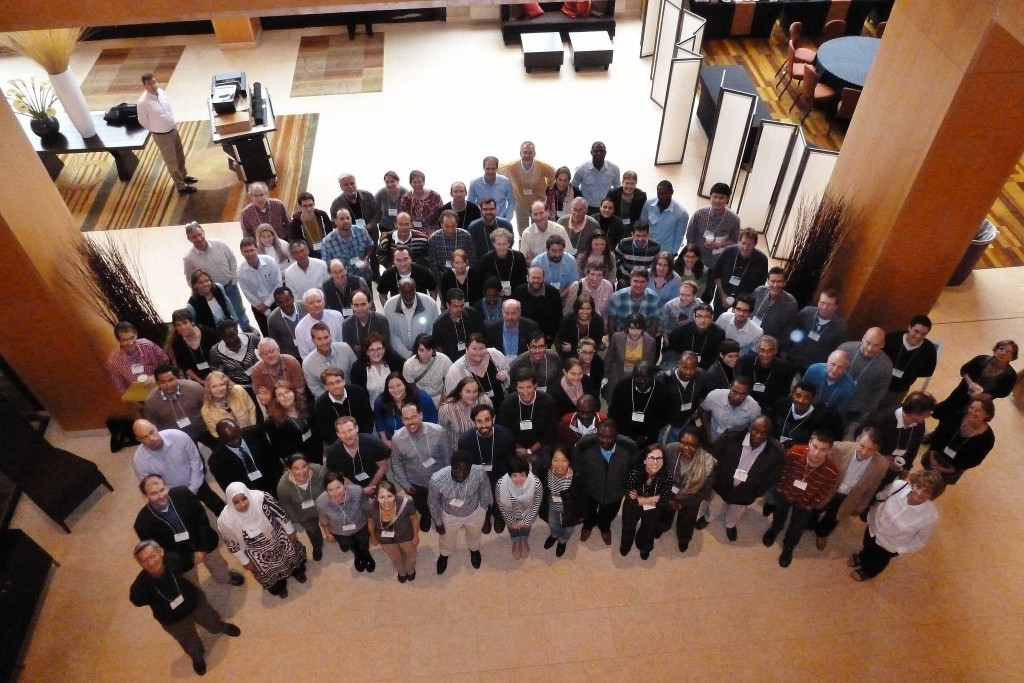
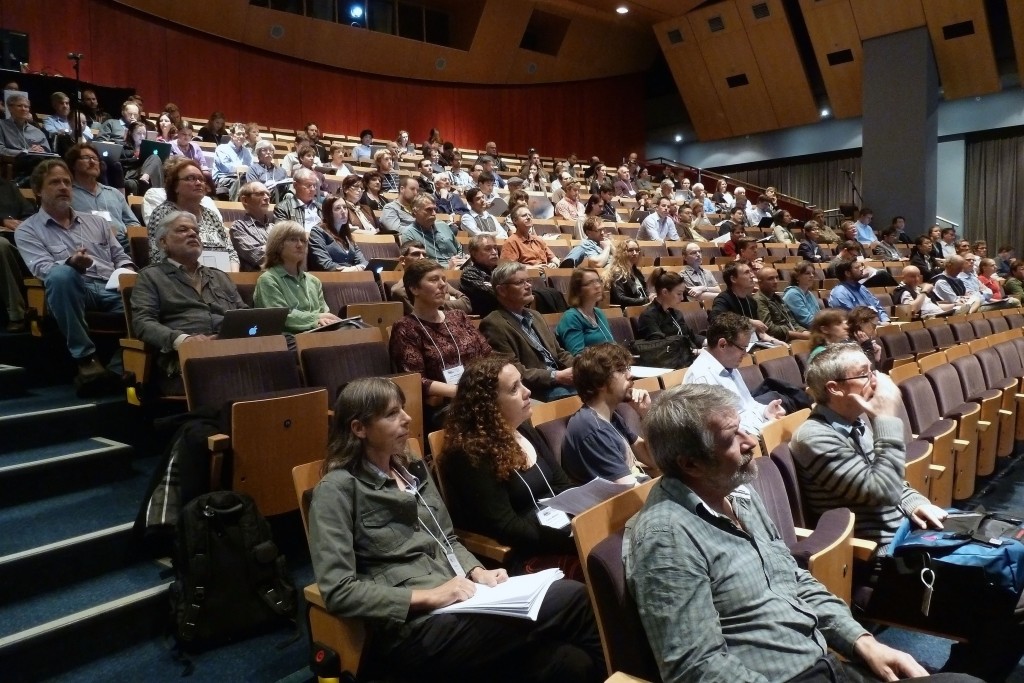
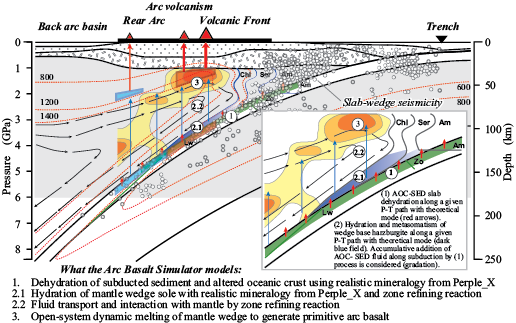 This short course is intended to help students, faculty, and researchers develop skills for mining data from EarthChem about the composition of arc lavas, visualize the location and important physical parameters of these volcanoes on GeoMapApp, and explore the petrogenesis of primitive lavas with a new Excel spreadsheet-based petrogenetic program “ABS 3” (Kimura et al., 2010). The course will comprise a variety of exercises and short lectures to explore and explain how these 3 software tools work together to address problems in convergent margin magma genesis. The course integrates use of geochemical databases, data visualization tools, and data analysis software with background knowledge about geoinformatics, relational databases, and data reporting. We will distribute ABS 3 spreadsheets and tutorials to participants before the workshop.
This short course is intended to help students, faculty, and researchers develop skills for mining data from EarthChem about the composition of arc lavas, visualize the location and important physical parameters of these volcanoes on GeoMapApp, and explore the petrogenesis of primitive lavas with a new Excel spreadsheet-based petrogenetic program “ABS 3” (Kimura et al., 2010). The course will comprise a variety of exercises and short lectures to explore and explain how these 3 software tools work together to address problems in convergent margin magma genesis. The course integrates use of geochemical databases, data visualization tools, and data analysis software with background knowledge about geoinformatics, relational databases, and data reporting. We will distribute ABS 3 spreadsheets and tutorials to participants before the workshop.